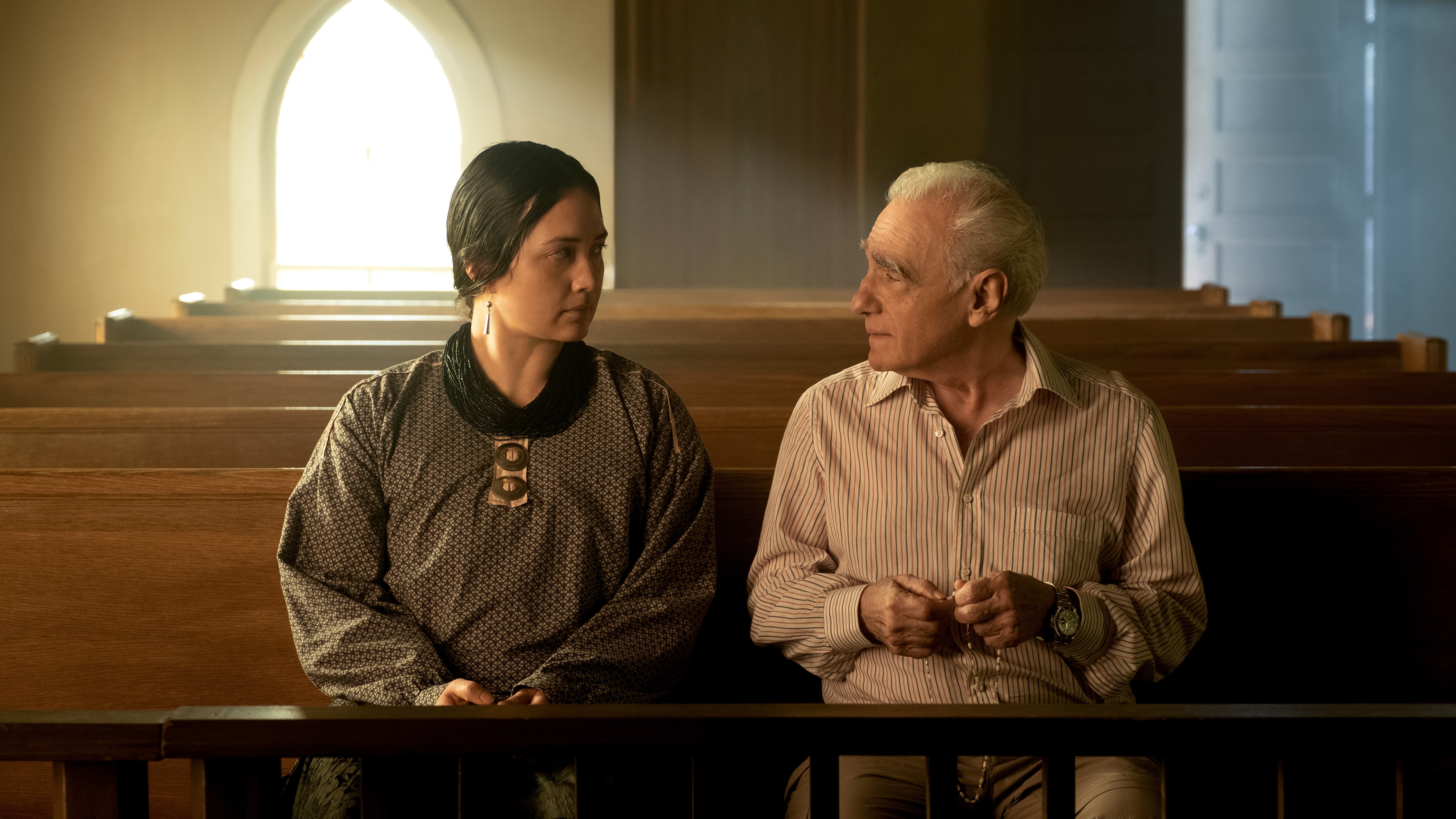I've watched every Martin Scorsese movie and his endings just keep getting better
The Killers of the Flower Moon is the latest Martin Scorsese movie that packs a punch with its final image.

WARNING: this post contains SPOILERS for Killers of the Flower Moon, The Irishman, Silence, The Wolf Of Wall Street and The Departed. Here's what you need to know on how to watch Killers of the Flower Moon.
As the movie that finally landed Martin Scorsese the Best Director Oscar that his career so richly deserved, there’s no denying the importance of The Departed.
But while there's plenty to enjoy about the hugely entertaining gangster thriller — from its surprise conclusion, to Scorsese's direction, Thelma Schoonmaker's editing and most of its performances — there is one aspect of The Departed that's always underwhelmed viewers.
Its final shot.
After Dignam (Mark Wahlberg) murders Sullivan (Matt Damon) in his apartment, Scorsese shows a rat running across his balcony railing in front of Boston's state capitol building. It's such an obvious and underwhelming attempt at symbolizing the previous 151 minutes that even The Simpsons' dumbest character, Ralph Wiggum, poked fun at it.
However, the conclusions of Scorsese's movies since The Departed haven't just perfectly epitomized the themes of his movies in one image or scene, they've also made them even more profound and thought-provoking in the process.
Just look at Scorsese's most recent movie, Killers of the Flower Moon. After depicting Ernest Burkhart's (Leonardo DiCaprio) years-long attempt to poison his wife Mollie (Lily Gladstone), as well as William King Hale's (Robert De Niro) systematic murder of members of the Osage Nation, Scorsese uses cheesy radio show performers to tell the epilogue of the characters.
The latest updates, reviews and unmissable series to watch and more!
When it comes to revealing later details of Mollie’s life, though, Scorsese himself steps onto the stage to reveal that she divorced Ernest, died in 1937 at the age of 50, and that her obituary didn’t mention the murders at all. The movie then cuts to dozens of Osage members doing a visually stunning tribal dance.
The Killers of the Flower Moon ending is his way of highlighting how white people have used the murders of people of color for their entertainment without taking their perspectives or voices into account. By having himself make the remarks, it's almost as if Scorsese is holding himself accountable, too, as many of his previous movies have lacked diversity and used racist language, even if the characters uttering them have clearly been abhorrent and unlikable.
By ending on the Osage dancing, Scorsese makes sure that they are the final voices we hear, while showcasing just how beautiful and inspiring their culture is.
Killers of the Flower Moon's provocative final sequence forces invested viewers to look inwards and challenge themselves about how they consume such stories. The result is that Killers of the Flower Moon and its intentions linger long in the mind after its credits have rolled.
Scorsese made the same sort of impact with his previous movie, The Irishman. After Frank Sheeran (De Niro) murders Jimmy Hoffa (Al Pacino), Scorsese uses the final 40 minutes to show how empty Sheeran's life has become now that all his friends have died and his family won't speak to him.
On the cusp of death, Sheeran is so regretful of all the murders he committed and most of the choices he made that he tries to avoid ruminating on and being scared by them. He asks a departing priest to leave the door ajar, so he can convince himself he's not alone and fend off the everlasting darkness that will soon come for him with death.

Again, Scorsese is challenging his audience to think about their own mortality and legacy, a feeling that's all the more impactful because he slows down the pace of The Irishman for its final act.
Meanwhile, with his final shot of Silence, Scorsese reveals that, even though he publicly renounced his Christian faith years earlier, Father Sebastião Rodrigues (Andrew Garfield), is cremated with a secret crucifix in his hand. While this is a more personal conclusion for Scorsese, it's no less powerful, as he alludes to his own battle with faith and spirituality, especially when it comes to how he’s depicted it in his movies.
With The Wolf Of Wall Street, after showing how depraved, corrupt and fraudulent Jordan Belfort (DiCaprio) has acted, we see he was still able to earn money after leaving prison by teaching his sales techniques to a never-ending line of people begging to know how he did it. The camera pans up to show people looking at Belfort like he's a Messiah, which is Scorsese's way of asking viewers how much they’re willing to sacrifice to earn money.
Each of these movies fall just short of matching the overall quality of Taxi Driver, Raging Bull or Goodfellas, which are rightfully regarded as Scorsese's finest movies. The endings for those movies focus on the fate of the characters, suggesting that they are still unstable and unhappy with the consequences for their actions.
But as he's got older, Scorsese has evolved from ending movies by simply wrapping up the story. Instead he uses the characters and their farewells to make viewers question the themes he's been examining throughout in a more blunt and confrontational manner. All with the hope that viewers will genuinely be altered by what they've just watched. After all, if there's anyone who knows and believes in the power of cinema, it's Martin Charles Scorsese.

Born and raised in England but now based in Philadelphia, Gregory Wakeman has written for the BBC, New York Times, The Guardian, GQ, and Yahoo Movies UK, all while defiantly trying to keep his accent.

